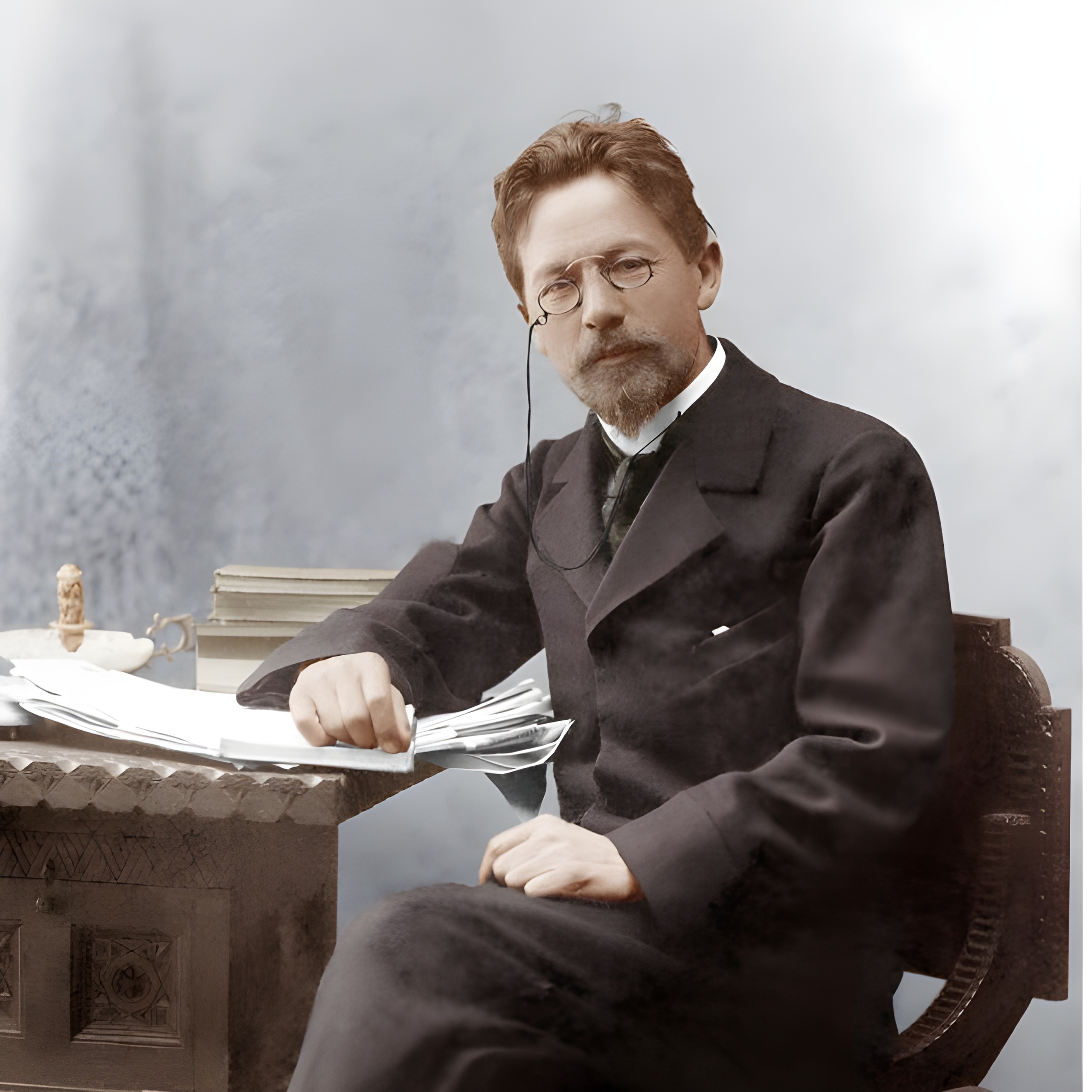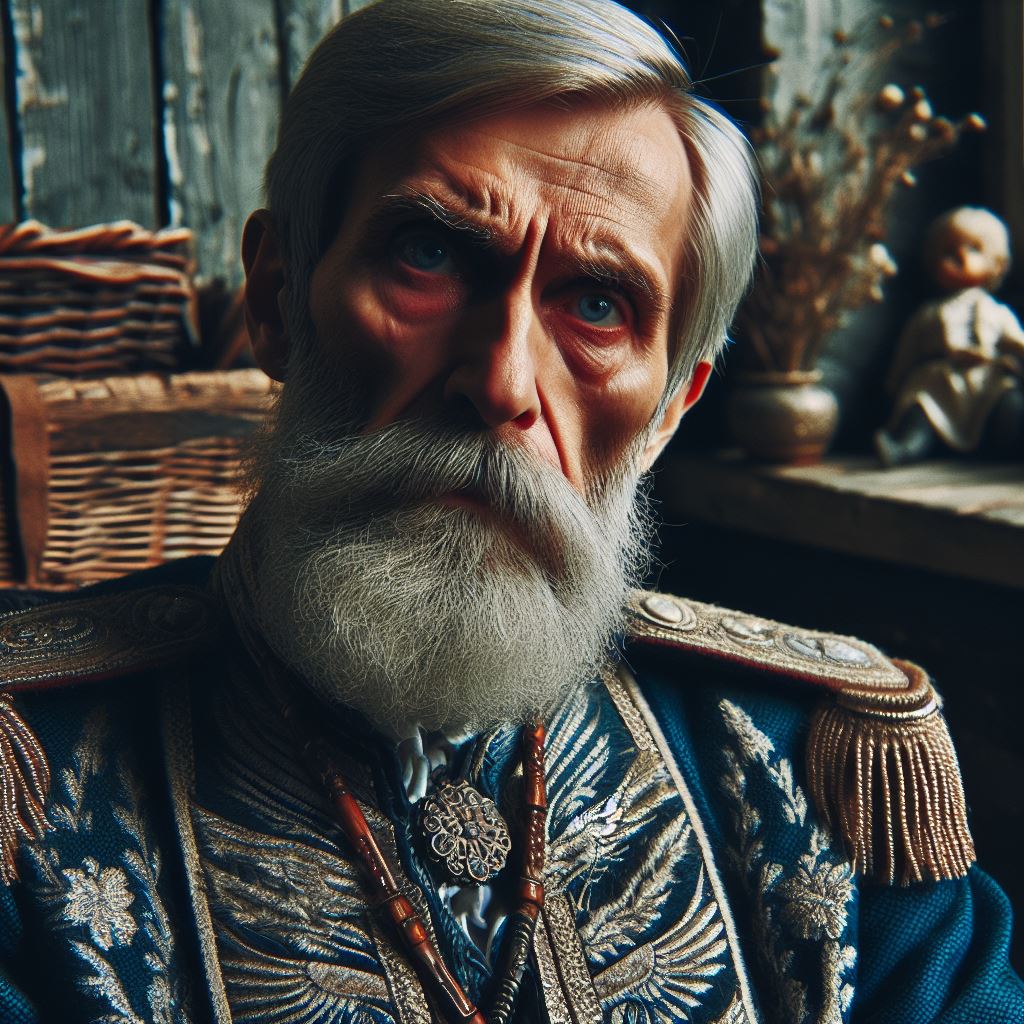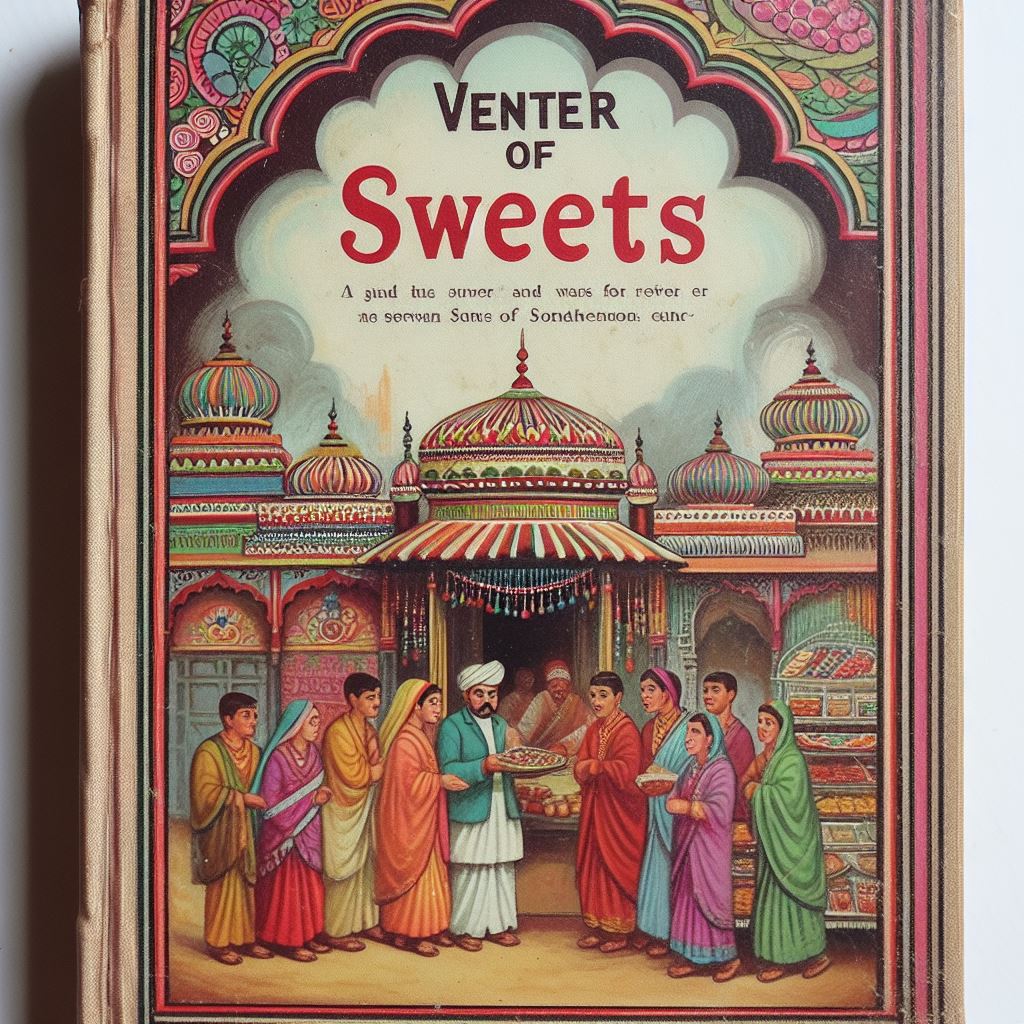The Bear an Analysis

"The Bear" by Anton Chekhov is a comedic one-act play about a widow, Popova, who encounters Smirnov, a creditor of her late husband. The interaction escalates into a heated argument, leading to a duel challenge, but unexpectedly results in the two falling in love.
Character dynamics in "The Bear" reveal themes of love, grief, and the unexpected. Chekhov uses rapid dialogue shifts to build tension and comedy. Characters' initial hostility transforms into affection, challenging societal norms on love and mourning.
Character Overview:
| Character | Description |
|---|---|
| Popova | Young widow, loyal to deceased husband, initially resolute |
| Smirnov | Creditor, brash, initially aggressive, reveals vulnerability |
| Luka | Popova's servant, peacekeeper, voice of reason |



Key Scene - Duel Challenge:
Popova: [Furious] You're a boor! A coarse bear! A bourbon!
Smirnov: [Provoked] Fine! Let's have a duel!
[Both characters, in their own corners, mimic drawing pistols]
Popova: [Aiming at Smirnov] I'll shoot you like a partridge!
Smirnov: [Aiming at Popova] Bang! Bang!
[They lower their weapons, look at each other, tension turns to attraction]
The duel scene is pivotal, transitioning from conflict to romantic climax.
Chekhov's "The Bear" employs irony and satire to critique societal norms. The widow's vow of eternal mourning is quickly abandoned, highlighting the fickleness of human emotions.
Dramatic Irony Example:
| Scene | Expected Norm | Actual Outcome |
|---|---|---|
| Duel | Seriousness | Leads to love |
Satirical Elements:
- Mourning: Popova's exaggerated grief satirizes societal expectations of widowhood.
- Masculinity: Smirnov's exaggerated machismo is mocked when he quickly succumbs to love.
Play Structure:
Act 1: Introduction - Popova's mourning
Act 2: Rising Action - Smirnov demands repayment
Act 3: Climax - Duel challenge
Act 4: Falling Action - Realization
Chekhov's "The Bear" uses comedic devices to develop characters and themes:
Comedic Devices:
| Device | Function in "The Bear" |
|---|---|
| Hyperbole | Exaggerates emotions to ridicule mourning |
| Misunderstanding | Drives plot, leads to duel and romance |
| Slapstick | Physical humor underscores absurdity |
Themes Visualized:
Love <-----> Grief
^ |
| v
Unexpected <-----> Societal Norms
Dialogue Excerpt (LaTeX for emphasis):
Popova: "I {hate} you!" Smirnov: "And I {despise} you!"
Moments later, their animosity turns to attraction, showcasing the thin line between love and hate.
Chekhov's "The Bear" also explores the theme of emotional liberation through the characters' transformation.
Transformation Visualized:
Popova: [Mourning] ---> [Liberated by love]
Smirnov: [Angry creditor] ---> [Romantic]
Transformation Process:
+----------------+ +----------------+
| Emotional | | Emotional |
| imprisonment | ----> | liberation |
+----------------+ +----------------+
Setting Influence:
- Isolated estate: Amplifies characters' emotional journey.
- No external interruptions: Ensures focus on character dynamics.
Symbolism:
| Symbol | Meaning |
|---|---|
| Bear | Represents Smirnov's rough exterior |
| Debt | Emotional and financial burdens |
Chekhov uses the setting and symbolism to enhance the narrative arc from emotional captivity to freedom.
Chekhov's "The Bear" uses the concept of a "comedy of manners," which mocks social etiquette.
Key Concept: Comedy of Manners
+------------------+---------------------+
| Social Etiquette | Chekhov's Treatment |
+------------------+---------------------+
| Mourning period | Reduced to absurdity|
| Debt collection | Catalyst for comedy |
| Dueling | Subverted with love |
+------------------+---------------------+
Expressive Representation of the Play's Structure:
Introduction (Act 1)
|
v
Rising Action (Act 2)
|
v
Climax: Duel (Act 3)
|
v
Falling Action (Act 4)
|
v
Conclusion: Love Triumphs
Chekhov's satire targets the pretense of high society, revealing deeper human truths beneath.
Chekhov's "The Bear" also examines the clash between reality and pretense.
Expressive Representation - Reality vs. Pretense:
+----------------+ +----------------+
| Pretense | | Reality |
+----------------+ +----------------+
| Popova's grief | ----> | Sudden romance |
| Smirnov's debt | ----> | Emotional need |
| Duel seriousness| ----> | Comedic farce |
+----------------+ +----------------+
Climactic Moment - Duel Scene (ASCII Art):
Popova (P) Smirnov (S)
| |
|----*----|----*----|
| | |
(P) (S) (P)
| | |
|----*----|----*----|
| |
- = Dueling pistols aimed
This scene encapsulates the shift from pretense to genuine emotion, pivotal in the play's thematic development.
Chekhov's "The Bear" also highlights the transformation of personal space into emotional battleground.
Space Transformation:
Popova's Living Room:
+---------------------+
| |
| [P] [S] |
| |
+---------------------+
[P] = Popova's initial emotional fortress
[S] = Smirnov's intrusion and subsequent emotional impact
The living room, once a private mourning space, becomes the stage for confrontation and unexpected romance.
Dialogue Dynamics:
\begin{align*}
\text{Popova:} & \text{ "You think because you're a man, you can..."} \\
\text{Smirnov:} & \text{ "It's not about gender. It's about..."} \\
& \text{ [Their dialogue overlaps, intensifying the scene]}
\end{align*}
The overlapping dialogue emphasizes the chaotic, yet transformative nature of their encounter.
Chekhov's "The Bear" employs the structure of classical comedy, resolving with a harmonious ending.
Expressive Representation - Classical Comedy Structure:
Introduction: Characters' introduction, setting the scene
|
v
Conflict: Popova and Smirnov's clash over debt
|
v
Climax: Duel challenge, peak of emotional tension
|
v
Resolution: Realization of mutual attraction
|
v
Conclusion: Reconciliation and romantic union
The play concludes with characters finding common ground, aligning with the comedic tradition of restoring social harmony.
Chekhov's "The Bear" employs a fast-paced, real-time narrative, compressing significant emotional shifts into a single act.
Narrative Timeline:
+---+----------------+----------------+----------------+----------------+
| | Introduction | Rising Action | Climax | Resolution |
+---+----------------+----------------+----------------+----------------+
| T | Popova's grief | Smirnov's | Duel | Mutual |
| i | | demand for | challenge | attraction |
| m | | repayment | | |
| e | | | | |
+---+----------------+----------------+----------------+----------------+
The play's single-act structure intensifies the emotional journey, encapsulating a complete story arc within a brief encounter.
